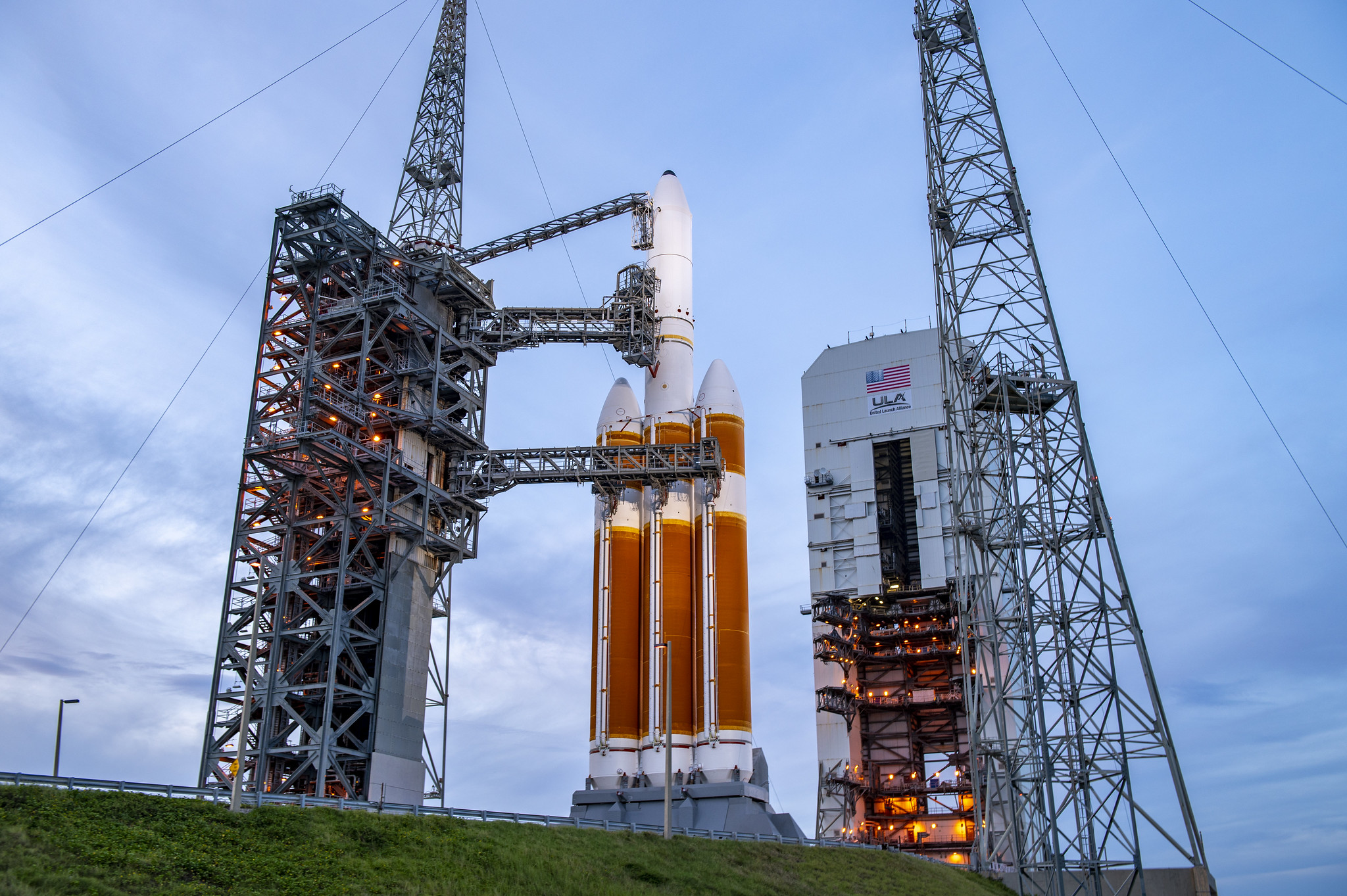WASHINGTON — The U.S. Space Force is preparing to kick off environmental studies that could lead to SpaceX Starship launches from either the Cape Canaveral facility used by the Delta 4 or a new complex.
A new website outlines plans by the Department of the Air Force, which includes the Space Force, to prepare an environmental impact statement (EIS) regarding Starship launches from Cape Canaveral Space Force Station. Such a review is required by the National Environmental Policy Act for any major action, like construction of a new launch complex.
The study would examine the environmental impacts of converting Space Launch Complex (SLC) 37 at Cape Canaveral into a Starship launch complex. “SpaceX would modify, reuse, or demolish the existing SLC-37 infrastructure to support Starship-Super Heavy launch and landing operations,†according to the site.
SLC-37, built in the 1960s for the Saturn 1 and 1B rockets, was later converted by Boeing to host launches of the Delta 4. That rocket will soon retire, with the final Delta 4 Heavy launch scheduled for as soon as March. There are no plans by United Launch Alliance to continue use of the site by its new Vulcan rocket, which launches from nearby SLC-41.
The EIS will examine one alternative option, which involves building a new launch complex designated SLC-50 for Starship. That would be located between SLC-37 and the next pad to the north, SLC-40, used by SpaceX’s Falcon 9. As is typical with such environmental studies, the EIS will include a “no action†alternative where no Starship launch sites are built at either location.
The website offers no other details about the plans to support Starship launches at either SLC-37 or the new SLC-50. The Department of the Air Force is planning three public meetings to discuss the scope of the EIS, scheduled for March 5, 6 and 7 in Cocoa, Titusville and Cape Canaveral, Florida, respectively. A fourth, virtual meeting is scheduled for March 12.
Those scoping meetings will start the process of the EIS, which will take more than a year and a half to complete. According to a schedule on the site, a draft EIS would be published in December for public comment. The final EIS, along with the determination of which of the three options is the preferred alternative, is projected for September 2025, followed a month later by the formal record of decision.
The surge in interest in Cape Canaveral launch facilities has led the Space Force to transfer other, abandoned launch sites there. In March 2023, the Space Force allocated three launch sites, SLC-13, 14 and 15, to four companies. ABL Space Systems will develop a launch site at SLC-15 for its RS1 small launch vehicle, Stoke Space will take over SLC-14 for the reusable launch vehicle it is developing, and SLC-13 will be shared by Phantom Space and Vaya Space for their planned small launch vehicles.
There is little property available elsewhere at Cape Canaveral for additional launch sites. “We’ve reallocated all of our launch pads,†said Space Force Col. Shannon DaSilva, deputy director of operations for Space Systems Command, during a presentation at the annual meeting of the Global Spaceport Alliance Jan. 29. “We don’t have much more land to give.â€
SpaceX currently has one Starship launch pad at its Starbase site in South Texas, and Elon Musk said at a January event that the company plans to build a second launch pad there. “We’re really going to be launching a lot. We’re going to be upgrading one tower while we’re launching from another tower, so two towers is important,†he said.
SpaceX is also building a Starship launch pad at Kennedy Space Center’s Launch Complex 39A, adjacent to the existing pad that hosts Falcon 9 and Falcon Heavy launches. In December 2021, KSC announced it was preparing to start an environmental review to construct a Starship launch complex at a location at the northern end of KSC property designated LC-49. That study, though, was put on hold and is not being actively pursued.
Related
Read the original article here



